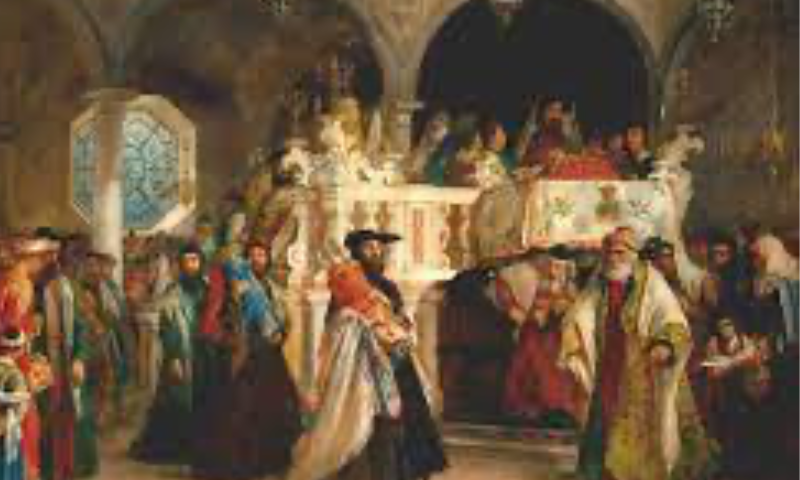Philologos
Mosaic Magazine, Sept. 20, 2018
“But was this an actual Simḥat Torah service? I have my doubts.”
“One of the most famous foundational stories in the narrative of Anglo-Jewry,” it was called by Tablet several years ago. The online Jewish magazine was referring to an entry in the diary of the British statesman Samuel Pepys (1633-1703), describing a visit to the Shaar Hashamayim synagogue in London on, so it would seem, Simḥat Torah, the day of the Rejoicing of the Law that marks the end of Sukkot and the autumn holiday season. Established in 1656, scant months after the government of Oliver Cromwell permitted the re-entry of Jews after a banishment dating back to 1290, Shaar Hashamayim was the country’s first synagogue in over 350 years.
Today, Pepys (pronounced “Peeps”) is better known as a diarist than as the chief secretary to the admiralty that he rose to be. The daily record that he made of his doings and of goings-on in London between 1660 and 1669 provides an invaluable glimpse into the life of the period. For our own purposes, on Wednesday, October 14, 1663, after summing up a morning of official business, he continued, characteristically leaving out some of his pronouns and verbs:
Thence home and after dinner my wife and I, by Mr. Rawlinson’s conduct, to the Jewish Synagogue: where the men and boys in their vayles, and the women behind a lattice out of sight; and some things stand up, which I believe is their Law, in a press to which all coming in do bow; and at the putting on their vayles do say something, to which others that hear him do cry Amen, and the party do kiss his vayle. Their service all in a singing way, and in Hebrew. And anon their Laws that they take out of the press are carried by several men, four or five several burthens in all, and they do relieve one another; and whether it is that everyone desires to have the carrying of it, I cannot tell, thus they carried it round about the room while such a service is singing. …


